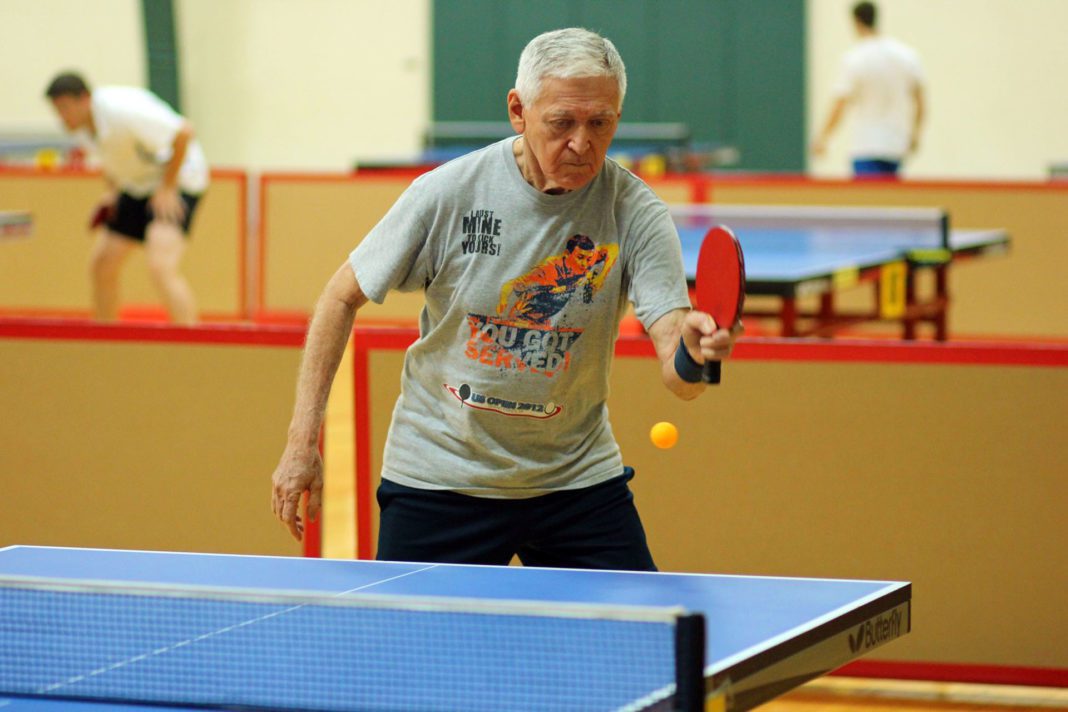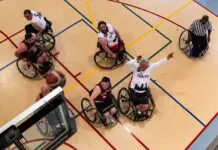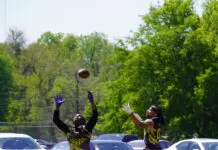Table tennis, the original name for the game often referred to as Ping-Pong, originated in England in the late 1880s. The game evolved from lawn tennis, becoming the “indoor” version to accommodate cold weather.
The early equipment consisted of balls made of cork and bats made of dried animal skins, stretched across a wooden frame. In England, the term is “bats,” but in the U.S. they are referred to as “paddles.” As the game evolved, animal skins were replaced with rubber padding, and pimples, or “pips,” were later added to offer more ball control. Competition paddles often have a smooth side for adding spin to the ball. The “pips” side cushions the return or the serve, and slows down the ball’s spin.
In 1970, Tulsa’s first table tennis club began at the 17th and Memorial YMCA. Today, the Tulsa Table Tennis Club has facilities at Bixby Community Center and the John Knox Church; club membership allows you access to play at both locations. For each player’s first two weeks at Bixby, play is free. Afterward, membership is $40 per year. Knox Church costs $100 per year. For beginners, TTTC offers loaner paddles and can offer guidance on what type of paddle would suit various players and their respective styles.
Oklahoma City Table Tennis Club has players ranging from beginner to advanced. They have loaner paddles as well as a pro shop. On Monday evenings, the club hosts its League Nights, and on Tuesdays, Fridays, and Saturdays, OCTTC offers open play. Lessons are also offered on Saturdays. Monthly memberships are $45 for adults.
Table tennis is the world’s most popular racket sport, and is distinct from Ping-Pong in one way only: Ping-Pong is a trademarked term, and table tennis is the generic and historical name used in competitions.
Some of the rules for table tennis include:
- Players each serve twice and then the alternate player also serves twice.
- Unlike traditional lawn tennis, a player does not have to win specifically off their own serve in order to score a point.
- If a game ties at 10-10, a player must win by 2 points.
- If a served ball hits the net, it is considered a “let,” and the point must be replayed.
- Each table tennis serve must cross the table diagonally to be legal.
Table tennis promotes entertainment, athletic competition and physical fitness, and also serves as a catalyst to encourage interaction among different generations. Table tennis is unique to most sports, in that it is size and gender-neutral.
Oklahoman Ray Pestridge recently won gold medals in both doubles and singles at the Senior Games in Florida in June 2022. When asked what it takes to get started, he told the interviewer: “All you need are sneakers and a paddle.”
Key Dates in Table Tennis History
1880-1890: Table tennis originates in England.
1901: The first table tennis tournaments and organizations are created.
1901: The name “Ping-Pong” is trademarked by English Firm J. Jaques & Son.
1901: The Ping-Pong Association is formed.
1902: A Japanese university professor introduces table tennis to students in Japan.
1902: The first unofficial “world championship” is held.
1922: The Ping-Pong Association is renamed the Table Tennis Association.
1926: The International Table Tennis Federation (ITTF) forms in Berlin.
1926: The first official championships is held in London.
1930: The American Ping-Pong Association becomes the first organized association for the sport in the U.S. – only Parker Brother’s Equipment is permitted for play.
1932: U.S. Amateur Table Tennis Association and the National Table Tennis Association are formed.
1935: APPA, USATTA and NTTA combined to become the U.S.A. Table Tennis Association.
1948: Parker Brothers files a trademark for “Ping-Pong” in the U.S.
1952: Foam rubber rackets are introduced in Japan.
1970: Tulsa Table Tennis Club is formed.
1971: The U.S. Table Tennis Delegation visits the People’s Republic of China – an event dubbed “Ping-Pong Diplomacy,” credited for significant improvements in U.S./China relations.
1988: Table tennis becomes an Olympic sport.
2000: Competitive games begin being played to 11 points instead of 21.
2000: The size of the regulation ball changes from 38mm to 40mm.


























